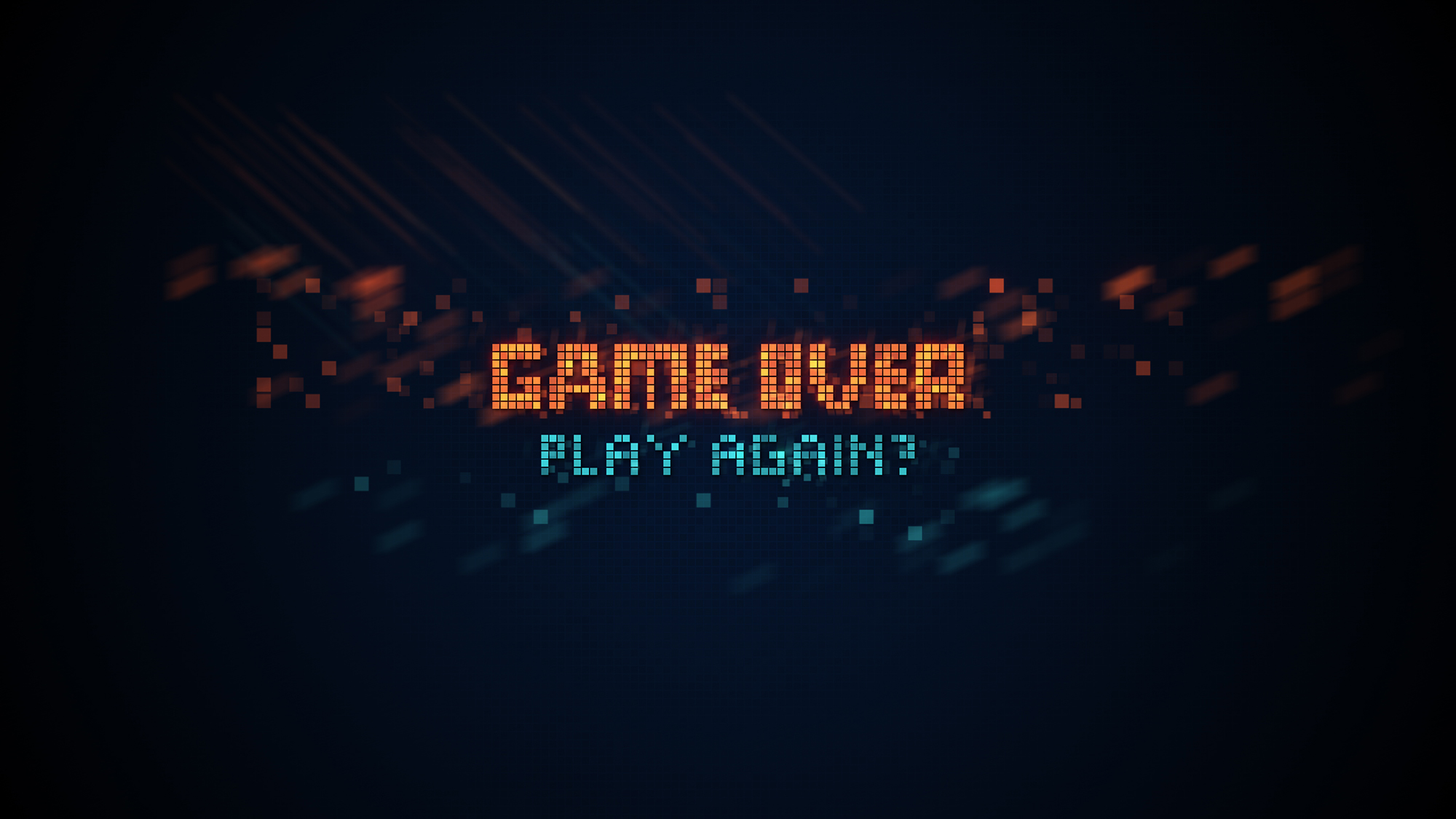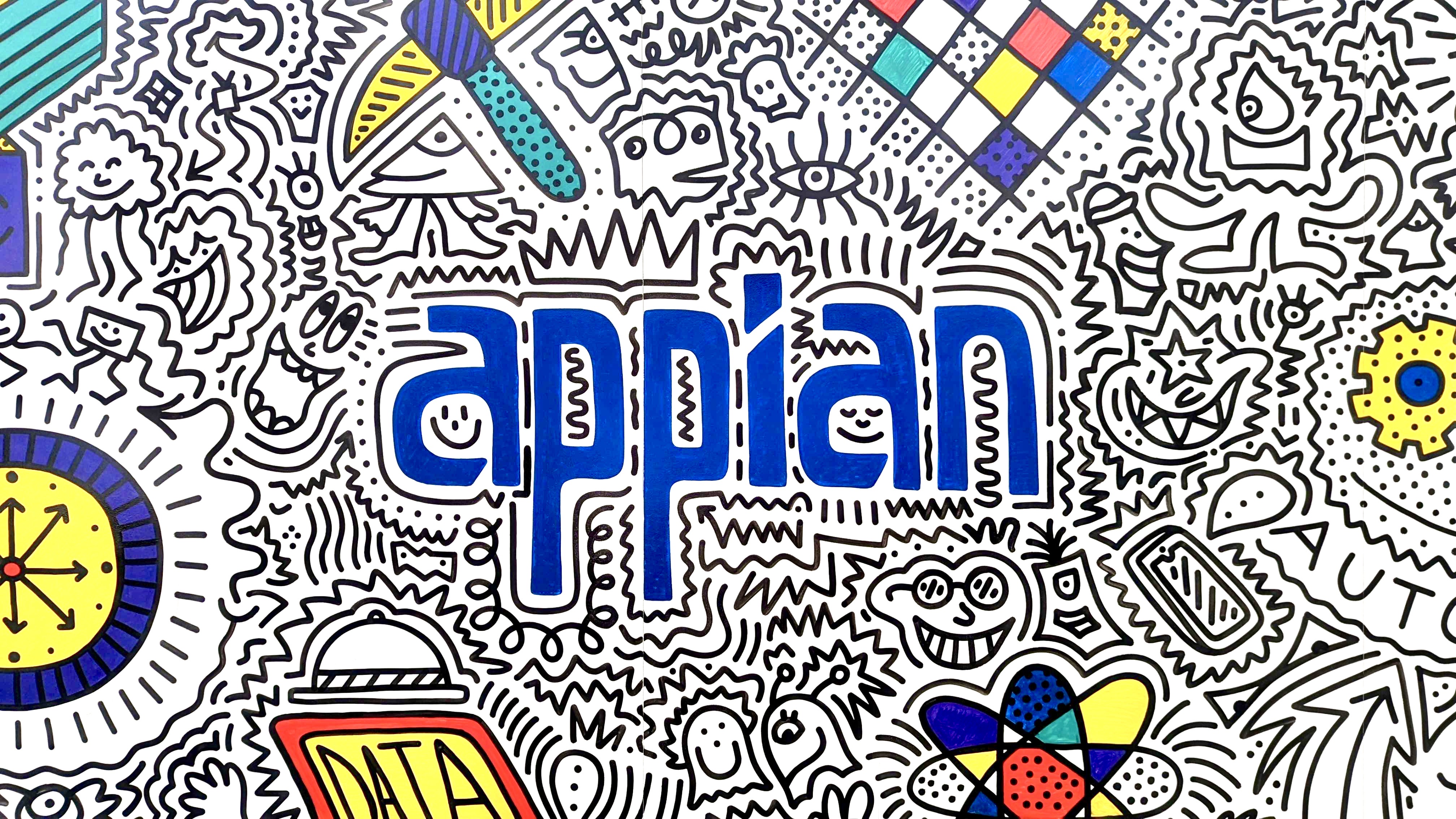Whatever happened to the 1980s coding heroes?
They founded an industry – sometimes before even leaving school. So what happened to the brilliant bedroom coders of the eighties?


Philip and Andrew Oliver certainly didn’t start writing games with a Tom Cruise movie-sized budget. The twin brothers started off with a secondhand ZX81 in 1982 and began programming simple games.
At that point, new games, genres and graphical styles were emerging in the arcades at a furious pace. “You’d see something entirely new and different,” says Andrew, “and you’d say ‘wow, how does this stuff work?”
The two were inquisitive, and quickly realised that as the early home computers emerged, they were theoretically capable of doing the same things. “In reality, they never quite had the resolution or the colour or the speed,” he notes. Although, as Philip interjects, “next year’s would”.
“It was super-exciting,” says Andrew. “We thought it was a new type of entertainment, and we were fascinated about how it worked.”
Helped by Basic programming manuals and the type-in listings in magazines, the twins threw themselves into programming. “It felt on an achievable level,” says Philip, “especially when you’d load up a rubbish game and think ‘I could do better than this’.”
The twins saved and upgraded to a Dragon 32, and by the end of 1982 had submitted their first listings to Computer and Video Games magazine. By 1983, aged 15, they’d bought a BBC Micro and won a competition run by the ITV children’s programme, The Saturday Show. The twins appeared on the programme, the game was picked up by Acornsoft and the Olivers suddenly found themselves amongst the UK’s first game developers.
Of course, in those days it was barely considered a profession. “Everybody was so amateurish,” says Philip. “We had several business meetings that were just in people’s living rooms.”
Get the ITPro daily newsletter
Sign up today and you will receive a free copy of our Future Focus 2025 report - the leading guidance on AI, cybersecurity and other IT challenges as per 700+ senior executives
Most of the UK’s games publishers were backroom businesses. Even the more professional outfits, such as Interceptor Software, were based in tiny industrial units, where they would code, duplicate and distribute – even do the cover art – in-house.
Beyond Basic
The Oliver twins weren’t the only teenagers coding a career for themselves. In 1982, David Perry, a 15-year-old boy from Northern Ireland, started writing game listings for a ZX81 magazine. He wrote more listings for books and then, aged 17, moved to London to work for one of the great early games publishers, Mikro-Gen. At that point, Perry had moved on from Basic. “When I got a book on programming Assembly language, the whole world changed,” he recalls. “Now I could make ‘professional’ performance games, and I never looked back.”
Perry found the early gaming industry hugely exciting. “I went to something called the ZX Microfair and it melted my brain. A room filled with like-minded people, all handing cash across tables to buy the latest games on cassette tapes in plastic bags. The energy was electric, as you found yourself face to face with your programming and game-design heroes. Imagine if, in the old days of music, you would go to an event and buy a new record from Michael Jackson, personally handing him the cash.”
Working to convert classic Mikro-Gen hits such as Pyjamarama, Perry honed his skills, later moving to Probe Software to work on games based on The Terminator and Teenage Mutant Ninja Turtles.
Others got their games through more unorthodox routes. One of the best software houses of the day was Hewson Consultants, founded by Andrew Hewson, which released its first games in 1981. Hewson began by writing a short book, Hints and Tips for the ZX80, then a follow-up on the ZX81. “This brought me to the attention of the people who created the Sinclair User magazine,” he explains, “and pretty soon I was writing a regular monthly helpline column.” This led to enthusiastic young programmers sending him games they’d written. “We picked the very best material we received and transformed ourselves into games publishers.”
Hewson’s software developed a reputation for innovation and technical achievement. “In the early days, everyone wrote their own software tools because nothing else was available. There were a few American books available which described the design and evolution of the Z80 chip. A few people, like Steve Turner, became sufficiently adept to write directly in machine code.”
Hewson Consultants ended up with some of the strongest talent in the business. “We rapidly learned to be very choosy about the people we would work with,” he says, and in doing so “managed to create a virtuous circle in which we published innovative, high-quality games and, as a result, people who were developing quality products were attracted to us.”
RELATED RESOURCE

Your comprehensive guide to low-code
The missing component of your digital strategy - for developers and CIOs alike
One of them was Andrew Braybrook, a young programmer working on the mainframes at GEC Marconi, and a friend of Hewson Consultants’ star programmer, Steve Turner. He had started off writing games in COBOL, then, aided by a couple of manuals, taught himself the Motorola 6809 Assembler language used by the Dragon 32. “I started out converting Steve Turner’s games from ZX Spectrum to the Dragon 32,” Braybrook explains. He took Turner’s designs but recoded everything from scratch, working around the 6809’s more limited register set, but using the Dragon 32’s extra RAM to add features and enhance the graphics.
Braybrook then moved to creating his own games for the Commodore 64. “It was clear that people were basing the best games on the strengths of the graphics chip,” he says, adding that he felt “both liberated and constrained by the restrictions of 256 user-defined characters and hardware sprites at once”. By making the most of these and the C64’s “smooth scrolling and multi-colour modes”, Braybrook created stunningly accomplished 8-bit masterpieces such as Uridium, Morpheus and Paradroid, still widely considered amongst the best games of the era.
A growing industry
By the mid-eighties, the games industry had become something of an arms race, with the coders scrambling to learn new languages and skills to keep them ahead of their peers. The Oliver twins learnt to programme in Basic, then in both 6502 and Z80 Assembler, with their only formal help coming from manuals and a couple of pages of a teacher’s handwritten code. They had published games, developed their own sprite graphics engine and editor, and even developed an art package. They were still in their teens.
“We were very obsessed,” says Andrew. “There were two of us and we always wanted to show off to the other one that we could do something they couldn’t do.” However, while the two drove each other on, they could also support each other, working to resolve each other’s technical issues and dream up new games. As Philip puts it: “Because we were the same level of expertise, we understood.”
After a few setbacks, Andrew and Philip found themselves developing their most ambitious game yet, Super Robin Hood, for a new budget games publisher, Codemasters. That was followed by a series of simulator games. “We were making the games fairly quickly,” says Andrew. “We had an idea and would say, ‘what are the difficult bits?’ and tackle them first. If we could get, say, the isometric graphics looking nice and scrolling, then we would put the rest of the game on top. We typically wrote these games in a month to six weeks.”
What’s more, the Olivers did everything in-house. “There was never any market testing or focus testing,” says Philip, “it was me and Andrew. We never showed the games to anyone else.” This caused the odd bug or bad idea, but they kept them to a minimum. “We had a bit of a reputation,” says Andrew, “and tested things to the best of our abilities… Nowadays, the more complexity and the larger the game, the more places you have bugs, whereas when you’ve only got 32KB of memory, there’s not a huge amount of code [to check].”
The twins were prolific, writing a string of successful games, but hit the jackpot with a series featuring a walking, talking egg. Built around a trio of strong graphic adventures, the Dizzy series became one of the most successful franchises of the late eighties, making the transition from the Commodore 64, ZX Spectrum and Amstrad CPC to the newer 16-bit computers – the Commodore Amiga and Atari ST – and even the first Nintendo and Sega consoles.
Leaving 8-bit behind
Like the boys themselves, the industry eventually had to grow up. With the move to 16-bit, development grew more complex. With the 8-bit titles, the Oliver twins had occasionally used artists, but handled most of the graphics and programming themselves. With the move to 16-bit, they needed a team. Luckily, Codemasters ran on an unusual business model, where developers producing games (and earning royalties) were allowed to work from the campus near Leamington Spa, surrounded by a pool of artists and programmers who worked for hire. Those who lacked the skills or self-motivation would pass through the system, while the best artists and coders stuck around. “That was the main difference with 16-bit,” says Philip. “You had to have teams, and actually creating and constructing that team, and making sure that everyone was motivated and pulled their weight, was actually pretty tricky.”
Andrew Braybrook found something similar. The new Motorola 68000 at the heart of the Amiga and ST was a much more complex chip, surrounded by even more complex custom graphics processors. “Games suddenly got a lot bigger,” says Braybrook. “Instead of having 48KB or 64KB of RAM, you had 512KB. The graphics went from two or four colours up to 16 or 32.”
While on 8-bit games, Braybrook had been able to work alone, “doing all the graphics, all the programming and the design, even the sounds,” for his 16-bit titles he had to employ artists, musicians and sound specialists, as well as project-manage the team. “Sometimes it can be difficult to get what you want,” says Braybrook. “Other times you can be pleasantly surprised and impressed.” This happened more often than not with the sound. “We always added the sound effects quite late on,” he notes, “and the games really come alive when that happens.”
It was in the 16-bit era that David Perry really made his mark. Cool Spot, based on a soft-drinks mascot, became a sizable hit for Virgin Games, while an adaptation of the Disney film Aladdin is still one of the best-loved movie tie-ins ever. Off the back of their success, Perry founded his own game studio, Shiny Entertainment, and went on to produce a series of games, including Earthworm Jim and MDK, cementing Shiny’s reputation as a major studio.
What happened next?
By 1990, the Oliver twins – still only 22 – had left Codemasters behind to start Interactive Studios, later Blitz Games. Both continued to code throughout the 16-bit era, and while Philip stopped programming around the launch of the Sony PlayStation, Andrew carried on to code the studio’s 3D engine and lead development on many of Blitz’s games, including original titles and a raft of movie, TV and toy tie-ins.
While it folded in 2013, the company had been one of the most successful UK game developers for 23 years, and Andrew and Philip continued to innovate at their next company, Radiant Worlds. The two spent four years working on an ambitious free-to-play MMO, SkySaga, until its South Korean publisher, Smilegate, cancelled the game before launch. The studio was sold to another major UK studio, Rebellion, and the twins continue to work as consultants, mentors and educators in UK games.
David Perry left game design behind for management, but threw himself back into the spotlight in 2011 with a revolutionary game streaming technology, Gaikai. This ran both PC and console games inside a web browser and worked so effectively that Sony bought the company. It’s at the heart of Sony’s PlayStation Now game streaming service to this day.
“My only regret selling Gaikai was it stopped us taking cloud gaming to the next phase,” explains Perry. “Our goal was to deliver games that people can’t afford to play at home. I don’t want to play $500-console games in the cloud, I want to play $5,000-console games from the cloud. That requires new games, and new elastic hardware.
“I’m just hoping someone delivers that in the next 20 years,” he adds, “so I can experience those games before I’m too old!”
As for Andrew Braybrook, he went on to write all-time greats such as the Amiga conversion of Rainbow Island but eventually shifted out of the games industry to move into enterprise coding. “Certainly having ‘published games designer and programmer’ on the CV helped me get the enterprise job,” he says. While he works in C and Visual Basic, his old skills still have their worth. “Most of the lads, especially the younger ones in the office, don’t know assembler or even hexadecimal. If their programme crashes and I go and help them out, I can say ‘What’s in the registers’ and show them the debugger, and they look like they’ve just met the chief high wizard.”
Now mostly retired, Braybrook is getting back into gaming, having worked on a new version of his favourite arcade game, Asteroids. “Coming back into games then after 20 years away means that things have moved on so much,” he says. “Now I’m the muggle.”
Indeed, none of them seem to have got over their obsession with games. “I think video games are the most immersive form of entertainment,” says Perry. “You’re not reading a book or listening to a song, you’re exploring and the game follows you.” Even though he’s left the industry for now, he hasn’t abandoned his passion. “I can’t wait to retire, as I’m going to get back to making games again, just for fun. You know you’re in the right business when you don’t need to be paid to do it.”
Stuart has been writing about technology for over 25 years, focusing on PC hardware, enterprise technology, education tech, cloud services and video games. Along the way he’s worked extensively with Windows, MacOS, Linux, Android and Chrome OS devices, and tested everything from laptops to laser printers, graphics cards to gaming headsets.
He’s then written about all this stuff – and more – for outlets, including PC Pro, IT Pro, Expert Reviews and The Sunday Times. He’s also written and edited books on Windows, video games and Scratch programming for younger coders. When he’s not fiddling with tech or playing games, you’ll find him working in the garden, walking, reading or watching films.
You can follow Stuart on Twitter at @SATAndrews.
-
 Bigger salaries, more burnout: Is the CISO role in crisis?
Bigger salaries, more burnout: Is the CISO role in crisis?In-depth CISOs are more stressed than ever before – but why is this and what can be done?
By Kate O'Flaherty Published
-
 Cheap cyber crime kits can be bought on the dark web for less than $25
Cheap cyber crime kits can be bought on the dark web for less than $25News Research from NordVPN shows phishing kits are now widely available on the dark web and via messaging apps like Telegram, and are often selling for less than $25.
By Emma Woollacott Published
-
 Appian wants to be the AI company for AI skeptics
Appian wants to be the AI company for AI skepticsAnalysis The firm outlines its AI strategy at Appian World 2023 while using ChatGPT and Midjourney to create scripts and imagery for keynote presentations
By Rory Bathgate Published
-
 GitHub launches paid remote internships with expansion plans underway
GitHub launches paid remote internships with expansion plans underwayNews The launch follows a successful trial and will initially be available for students in ten countries
By Zach Marzouk Published
-
 Record computing degree applications driven by AI interest, says BCS
Record computing degree applications driven by AI interest, says BCSNews The institute suggested students are attracted to computer sciences by innovative areas, which also include machine learning and the fight against climate change
By Rory Bathgate Published
-
 Women pursuing computing degrees surges, the biggest growth rate of any subject area
Women pursuing computing degrees surges, the biggest growth rate of any subject areaNews However, the amount of women beginning computing degrees this year is still low compared to men, a figure of 6,450 compared to 27,735
By Zach Marzouk Published
-
 Are coding bootcamps worth the investment?
Are coding bootcamps worth the investment?In-depth Fast-track software development programmes often promise a quick way into a high-paying and lucrative career, but you’d be right to approach with caution
By Connor Jones Published
-
 Why low-code and no-code can be a route through recession
Why low-code and no-code can be a route through recessionIn-depth Businesses in need of cost and time-savings might benefit from alternative methodologies
By John Loeppky Published
-
 Podcast transcript: Why devs are collaboration experts
Podcast transcript: Why devs are collaboration expertsIT Pro Podcast Read the full transcript for this episode of the IT Pro Podcast
By IT Pro Published
-
 The IT Pro Podcast: Why devs are collaboration experts
The IT Pro Podcast: Why devs are collaboration expertsIT Pro Podcast When it comes to cooperation, businesses could learn a few things from their IT team
By IT Pro Published